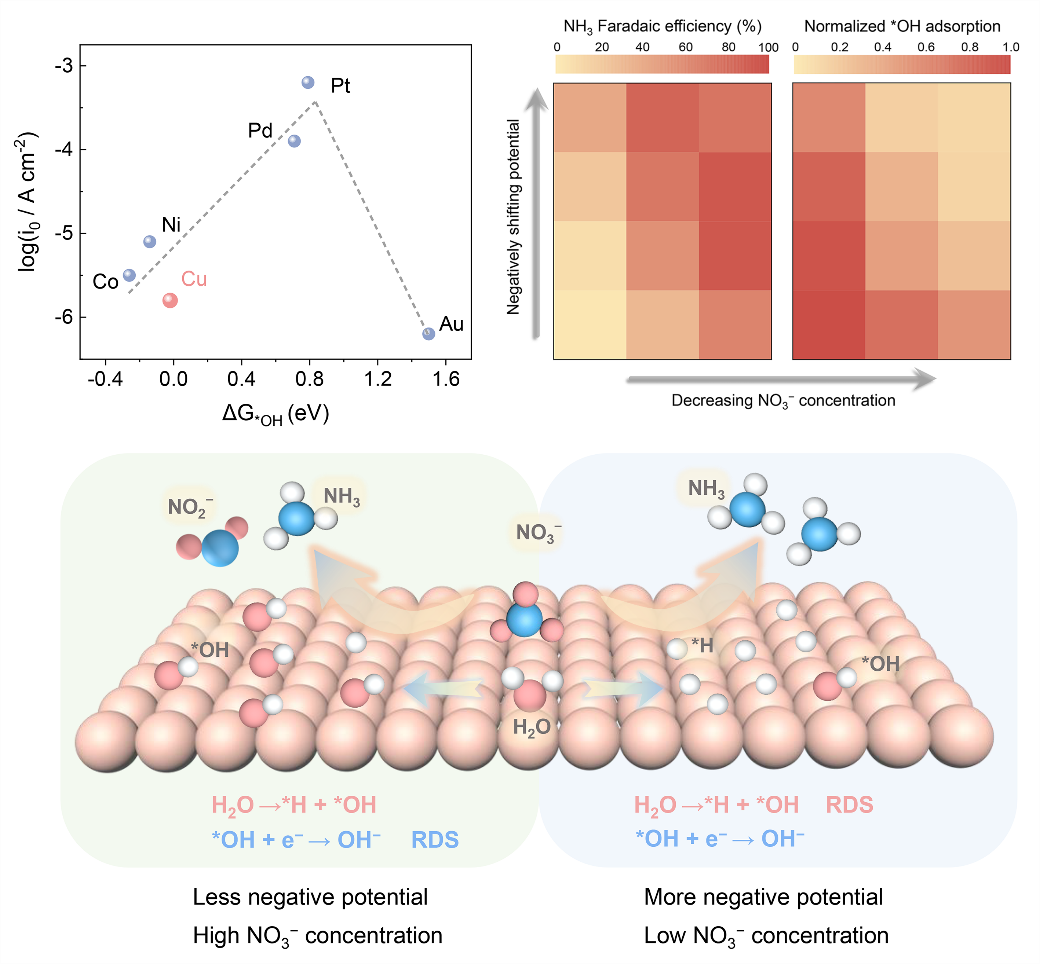Compared with the energy-intensive Haber-Bosch process, renewable energy-driven electrocatalytic nitrate reduction reaction (NO3−RR) provides a low-carbon route for ammonia synthesis under mild conditions. Using nitrate from wastewater as the nitrogen source and water as the hydrogen source, this route has the potential to produce ammonia sustainably while mitigating water pollution.
Copper (Cu)-based catalysts show a good performance for NO3−RR to ammonia. However, they still suffer from challenges including high overpotential, competing nitrite (NO2–) formation, and low overall energy efficiency.
In a study published in ACS Catalysis, a research team led by Profs. BAO Xinhe and GAO Dunfeng from the Dalian Institute of Chemical Physics (DICP) of the Chinese Academy of Sciences (CAS), in collaboration with Prof. WANG Guoxiong from Fudan University, proposed hydroxyl (*OH) adsorption as a selectivity descriptor for ammonia synthesis via NO3−RR over Cu catalysts.

Hydroxyl adsorption as a selectivity descriptor for electrocatalytic nitrate reduction over Cu catalysts (Image by WANG Yi)
Using a size- and shape-selected Cu nanocube model catalyst, researchers investigated how electrode potential and NO3− concentration affect NO3−RR product distribution. They found that more negative potentials and lower NO3– concentrations can improve ammonia selectivity over NO2– formation, which is an effect strongly correlated with weakened *OH adsorption.
Moreover, researchers proposed *OH adsorption as a descriptor for product selectivity, as it controls the availability of surface adsorbed hydrogen (*H) generated during water dissociation. They further demonstrated that using *OH adsorption as a descriptor can guide the design of both catalysts and electrolytes to lower NO3−RR overpotentials.
"Our work underscores the importance of *OH adsorption as a selectivity descriptor for designing more efficient systems toward ammonia electrosynthesis from nitrate," said Prof. GAO.